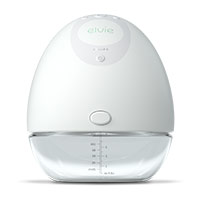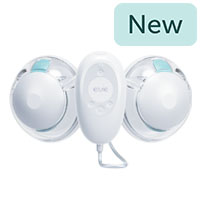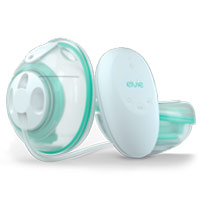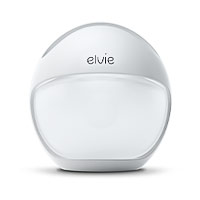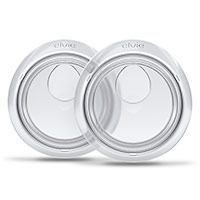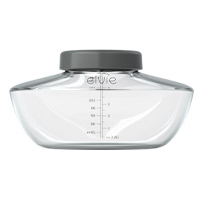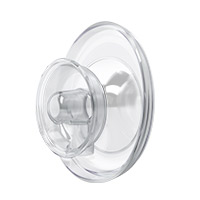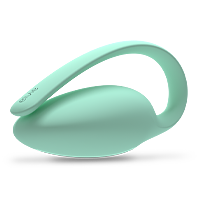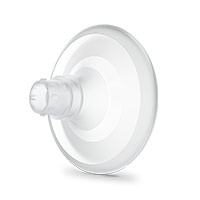This blog was updated on 07/11/23
First things first — your baby’s tongue-tie is nothing to worry about. It’s relatively easy to deal with, and there’s plenty of support out there for new moms and babies who are suffering. Some newborns who have tongue-tie may even be completely untroubled by it.
That said, we know how concerning it can be when something isn’t quite right with your little one, especially if it’s affecting their ability to feed properly. That’s why this post will explain everything you need to know about infant tongue-tie, including what causes it, how to spot it, and how to treat and manage the issue.
What is tongue-tie?
Also referred to by its medical name ankyloglossia, tongue-tie is when a baby’s tongue movement is restricted by a membrane (frenulum) that connects the tongue to the mouth. This can cause trouble for your little one when feeding by making their mouth tighter and limiting its movement.
There are two different types of tongue-tie:
Anterior tongue-tie affects the front of the tongue.
Posterior tongue-tie affects the back of the tongue, and can sometimes be a little bit more difficult to spot.
Tongue-tie is thought to affect up to 5% of all newborns, though it’s generally more common in baby boys than girls — up to 3 times more common, in fact. Some babies who experience tongue-tie won’t seem at all troubled by it, while in others it can restrict the tongue's movement, making it more difficult for them to breastfeed or bottle-feed.
What causes tongue-tie in newborns?
Tongue-tie typically occurs when the frenulum (the tiny ‘band’ of tissue under the tongue) fails to disconnect completely from the tongue before the baby is born. The frenulum will usually stay connected to the tongue as the baby grows, meaning the tongue will feel tight and its mobility will be restricted. Tongue-tie can affect any newborn, and the cause may be genetic.
How does tongue-tie affect breastfeeding?
When a baby breastfeeds, they need to be able to successfully ‘latch on’ to the nipple and breast tissue, using their tongue to cover the lower gum and prevent damage to the nipple as they feed. A baby with tongue-tie may be unable to open their mouth wide enough to latch properly, meaning they may have difficulty attaching to the breast or staying attached for long enough to feed effectively.
Breastfeeding a newborn with tongue-tie can also cause a mom’s nipples to become cracked or sore, as the baby's tongue provides less protection to the nipple while they feed. It may also cause a low milk supply (as your breasts may produce less milk if your baby is feeding infrequently or at irregular intervals), or a condition known as mastitis, as a buildup of milk may occur if your baby is unable to fully drain the breast at each feed.
How to spot tongue-tie
Tongue-tie isn’t always easy to detect, since there might be any number of reasons for your baby struggling to feed effectively or failing to establish a good latch. However, if your baby is unable to fully extend their tongue (or their tongue has a heart-shaped appearance on the tip), there’s a good chance they have tongue-tie. Their behavior during feeding may also be a good indicator.
Spotting tongue-tie when breastfeeding
If your baby is breastfeeding, there are a number of signs that may indicate they have tongue-tie. These signs include:
A small gape, so it feels like your baby is biting or grinding when feeding.
Refusing the breast.
Difficulty in latching.
Unsettled behavior during feeds.
Frequently coming off the breast or slipping back to the nipple.
Frequent or long feeds.
Poor weight gain or excessive early weight loss.
Clicking noises while feeding.
Colic, wind or hiccoughs during and/or after feeding.
Reflux (your baby vomits and/or is grouchy after feeds).
Spotting tongue-tie when bottle-feeding
If your little one is bottle-fed, the following factors may signal that they’re suffering from tongue-tie:
Reluctance to take a bottle (or being very slow in doing so).
Needing to be fed very often to get enough milk.
Dribbling excessively during feeds.
Pushing the bottle teat out.
Choking on feeds, even when you slow the feed down.
Only being able to manage a teat that has a very slow flow.
Outside of feeding, there are also several other tongue-tie symptoms to keep an eye out for. These include:
Your baby being unable to extend their tongue fully.
Difficulty lifting their tongue or moving it from side to side.
A heart-shaped appearance on the tip of the tongue.
Difficulty taking solids when you start weaning.
Speech problems in older babies.
How to treat tongue-tie in babies
The most common tongue-tie treatment is tongue-tie division, a straightforward and safe procedure that involves cutting the frenulum (the small piece of skin connecting the tongue to the bottom of the mouth). It’s thought to be almost painless, and most parents say their babies’ feeding improves immediately following the procedure. Many find it resolves the problem completely.
While tongue-tie division generally causes very little pain to your baby, your doctor or midwife may recommend local anesthetic to numb the tongue during the procedure. For older babies who have already started to grow teeth, general anesthetic may be recommended. To find out more about tongue-tie division, the International Affiliation of Tongue-Tie Professionals (IATP) can help you find a local tongue-tie practitioner.
Managing tongue-tie without surgery
While some parents will feel that the brief distress of tongue-tie division is worth the long-term improvements the procedure can offer, others may find the thought of cutting anything in a baby’s mouth scary. Depending on the severity, however, there are some non-surgical ways to manage tongue-tie and improve your baby’s feeding. These include:
Trying out alternative feeding positions. Breastfeeding positions such as the football hold (where you sit with your baby resting against your forearm) or the koala hold (where your baby sits upright while straddling your thigh or sitting on your hip) may help to improve latch if your baby is suffering from tongue-tie.
Using a nipple shield. A nipple shield is a thin silicone device that’s worn over the nipple to help your baby latch more effectively. Using one may assist with latching issues in a baby with tongue-tie.
Introducing paced bottle-feeding. If your little one is bottle-fed, paced bottle-feeding may help them to feed more effectively if they also have tongue-tie. It involves pacing your feeds to put your baby in control of the process (like they are with breastfeeding).
Of course, whether to have your baby’s tongue-tie divided is a personal decision, and you should discuss your options with your healthcare provider to ensure you’re making a choice you’re comfortable with. Remember, too, that every tongue-tie is different, and the range of issues it causes can vary from very mild to severe — so how much the tongue-tie is affecting feeding and your life with your baby may influence your decision.
Will tongue-tie go away on its own?
Tongue-tie doesn’t necessarily require treatment, particularly if it’s causing no visible symptoms and your baby is able to feed without any issues. As your child gets older, the frenulum may stretch as it grows, meaning any feeling of tongue tightness may resolve itself naturally by the time your child reaches 2 to 3 years of age.
However, it’s always best to seek treatment for tongue-tie in the following cases:
Your baby is unable to feed effectively due to their tongue-tie.
Your baby is struggling to gain weight.
Your nipples are becoming cracked or sore.
Your child has difficulty eating solids or develops speech problems as they get older.
In any case, it’s recommended that you seek professional advice from your baby’s healthcare provider if you suspect your baby may have tongue-tie.
Don’t let yourself get ‘tied up’ in information and advice when it comes to tongue-tie. If you think your baby might have tongue-tie, the most important thing to do is see a specialist for a proper diagnosis and advice on treating it. It’s usually nothing to worry about, but as with most things involving your baby, it’s better to be on the safe side.


